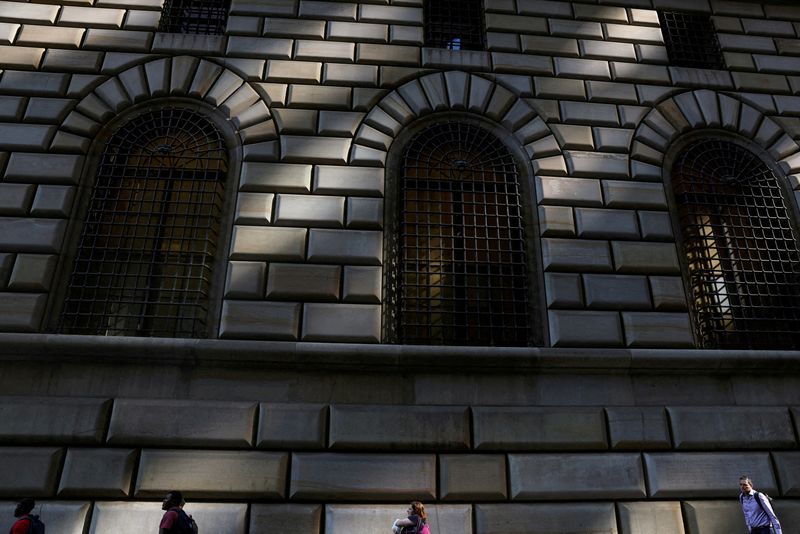By Michael S. Derby
NEW YORK (Reuters) – Banks have been tweaking the terms of commercial real estate mortgages to obscure losses, and in delaying the day of reckoning, are increasing risks to the broader financial system, a paper released Wednesday by the Federal Reserve Bank of New York said.
The commercial real estate sector, or CRE, has been under heavy pressure from the pandemic and its aftershocks. Lockdowns and the widespread rise of remote working has reduced the need for office buildings and similar structures, and thus far, the sector has shown few signs of recovery. On top of that aggressive Fed rate rises between the spring of 2022 and July 2023 further pressured banks.
“Banks ‘extended-and-pretended’ their impaired CRE mortgages in the post-pandemic period to avoid writing off their capital, leading to credit misallocation and a buildup of financial fragility,” the study’s authors wrote, adding problems associated with this lending could arise quickly.
Fed officials have been bracing for some level of manageable trouble among the banks that do CRE loans but have broadly argued that whatever issues arise will likely be modest, concentrated in smaller banks and slow moving, as financial institutions navigate the troubled landscape.
And yet, as bad as the pressure has been on the sector, the issue thus far has failed to generate broader dislocations. The report noted “nonperforming loans and net charge-offs have remained low by historical standards, especially for weakly capitalized banks.
The paper notes that CRE mortgages are mainly issued and held by banks, with these firms accounting for 50.7% of the $5.8 trillion CRE loan sector as of the final quarter of 2023.
Banks with “weaker” marked-to-market capital levels tied to losses in their securities holdings are the primary vector for the CRE mortgage extensions. The firms have since the first quarter of 2022 “pretended that such credit provision was not as distressed to avoid further depleting their capital,” the authors said.
Extending the maturity of these troubled loans has made it harder to make new CRE loans and increased the chances that troubled CRE mortgages will face an imminent reckoning, noting “the maturity extensions granted by banks also fueled the volume of CRE mortgages set to mature in the near term–a ‘maturity wall’ with the associated risk of large losses materializing in a short period of time.”
The paper said CRE mortgages from weakly capitalized banks have a 0.2 percentage point higher probability of getting the terms extended versus better capitalized banks.
The Fed rate cuts that kicked off in September and are projected to continue could however bring some relief to CRE lending.
On Monday, Moody’s lifted its outlook on the banking sector to stable from negative, in part of because “stabilizing asset quality for banks due to rate cuts, especially for CRE loans.”
Meanwhile, a report from Goldman Sachs at the end of September noted “there remains little evidence of a credit crunch in the CRE market” even as it is clear lending is growing at a much slower pace.

